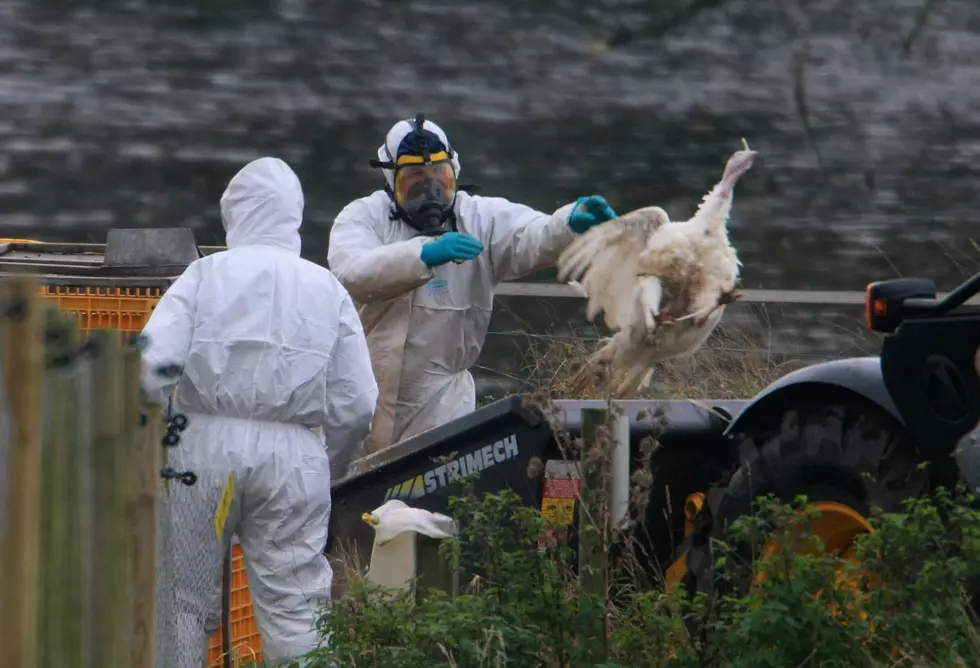
Deadly Disease That Killed Millions of Animals Infects Second Person in US
A second confirmed case of a human contracting a deadly virus that's causing food prices to skyrocket is worrying health officials.
Researchers have expressed renewed concern over the deadly H5N1 influenza strain, commonly referred to as avian influenza. That particular strain has caused the death of nearly 100 million birds since 2021.
Years later, researchers are now sounding the alarm that the virus has mutated enough to infect mammals.
Bird Flu Spreads to Cows, First Humans Infected
As reported by Nature, researchers have documented the first cases of bird flu infecting livestock. So far, cattle at farms across six states are confirmed to have been infected by avian influenza.
The biggest concern was how the cows contracted the virus, as it is currently unknown if the virus spread from birds or a different animal entirely. This is also sparking concerns what that means for human transmission.
Daniel Goldhill, an evolutionary virologist at the Royal Veterinary College in Hatfield, UK, told the outlet that humans have more contact with cows and that provided the virus with more chances to mutate and spread among mammals.
On Monday, it was confirmed that the second human case of the H5N1 avian influenza strain in 2024 was reported in Texas. The good news is, the farm worker's only complaint was eye inflammation and expressed no other concerning symptoms.
Upon testing the individual, the Centers for Disease Control and Prevention said results returned low viral levels in the worker's nose, which indicated a lack of a respiratory infection.
Virologists say that the threat of avian flu to Americans remain low at this time, but they are urging strong caution to keep the situation under control.
Said Goldhill, "There’s always a worry that viruses will surprise us. We don’t know what they’ll do next."
Controlling the Situation
Many of us feel a lot more informed on how viruses work since the pandemic. We all experienced the fatigue of new strains being discovered that were more effective at evading our immunity.
That is why researchers are keen to prevent the H5N1 avian flu strain from achieving a stronger transmissibility and developing more serious side effects among mammals.
This strain of avian flu hit its deadliest year in 2022, which resulted in the death of 52.7 million animals. The spread of the highly pathogenic virus caused egg prices to skyrocket, as the virus has a mortality between 90 and 100% in poultry within hours of infection.
Read More: Egg Prices on the Rise Again in New York State
The virus' lethality was due to its ability to affect multiple organs in birds. It also managed to kill so many because birds haven't been exposed to a virus of this magnitude before, so their immune response was extremely weak.
What made 2022 such a deadly year was that the strain was spread mostly by wild birds instead of farm-to-farm transmission. Waterfowl, like ducks, can contract the illness, but they often show no symptoms - this making it harder to determine healthy birds from those carrying the illness.
So when those migratory birds moved, the virus was able to easily spread across 46 states starting in the summer and lasting well into the winter season.
So far this year, New York has reported roughly 50 instances of avian influenza in wild birds. No positive cases have come from Oneida County, but several confirmed instances have been recorded on Onondaga and Lewis County.
Read More: CDC Tracking "Dangerous" Bacterial Infection Spreading in NY
Avian flu, at this time, poses a low risk to humans. Aside from the human case in Texas, only one other person in the U.S. has contracted the illness - a person in Colorado back in April 2022, as confirmed by the WHO. That patient only experienced fatigue and has since recovered.

The World Health Organization said the humans who contracted avian influenza likely had direct contact with infected animals.
Symptoms of infection include mild upper respiratory infections, fatigue, conjunctivitis, and gastrointestinal symptoms.
The WHO said the virus can result in death, as cases in other countries have reported symptoms of encephalitis and encephalopathy. So far, no one in the United States has developed such side effects, but the WHO has recorded 616 fatalities since 2013.
More Reasons Not to Panic about H5N1
What health officials wish to stress is that humans have been exposed to flu viruses before and have developed a better immunity to them. While the H5N1 strain may mutate to increase its transmissibility in mammals, like the H1N1 swine flu did all those years ago, chances remain low that it will develop a similar mortality rate as chickens.
Also, we have vaccines that have been proven to boost our immunity even more.
Researchers have also found bird flu does not spread to humans who consume the meat or eggs from an infected chicken.
To safely consume the animal product. heat the food to an internal temperature of 165-degrees. That farenheit kills all bacteria and viruses, including the H5N1 strain.
Read More: Norovirus Cases Slamming Northeast, Especially in New York
Investigations are now looking into how the virus is spreading to humans. Part of the research involves seeing how the virus is spreading among cattle, and if it is capable of passing from an infected cow to a healthy one.
If there is proof of cow-to-cow spread, it will show the H5N1 virus is beginning to master its transmission in mammals. According to an article from Science, research is being done to confirm if humans can contract the virus through direct contact with cattle, or by consuming an infected cow's milk.
USDA researchers say they have found "clear signals of the virus" in a cow's milk, more so than from nasal swabs and blood draws. Said Suelee Robbe Austerman of USDA’s National Veterinary Services Laboratory, "Right now, we don’t have evidence that the virus is actively replicating within the body of the cow other than the udder."
The first reported instance of the flu affecting cattle was on March 25 and farms in six states have confirmed infection. States include Texas, Michigan, Ohio and Idaho.
Norovirus Symptoms New Yorkers Need To Beware Of
Gallery Credit: Chris Cardenas
New York Unveils New COVID Plan To Save Lives, Prevent Illness
Watch out for These 7 Creatures That Can Hide in Your Car in New York
Gallery Credit: Megan



